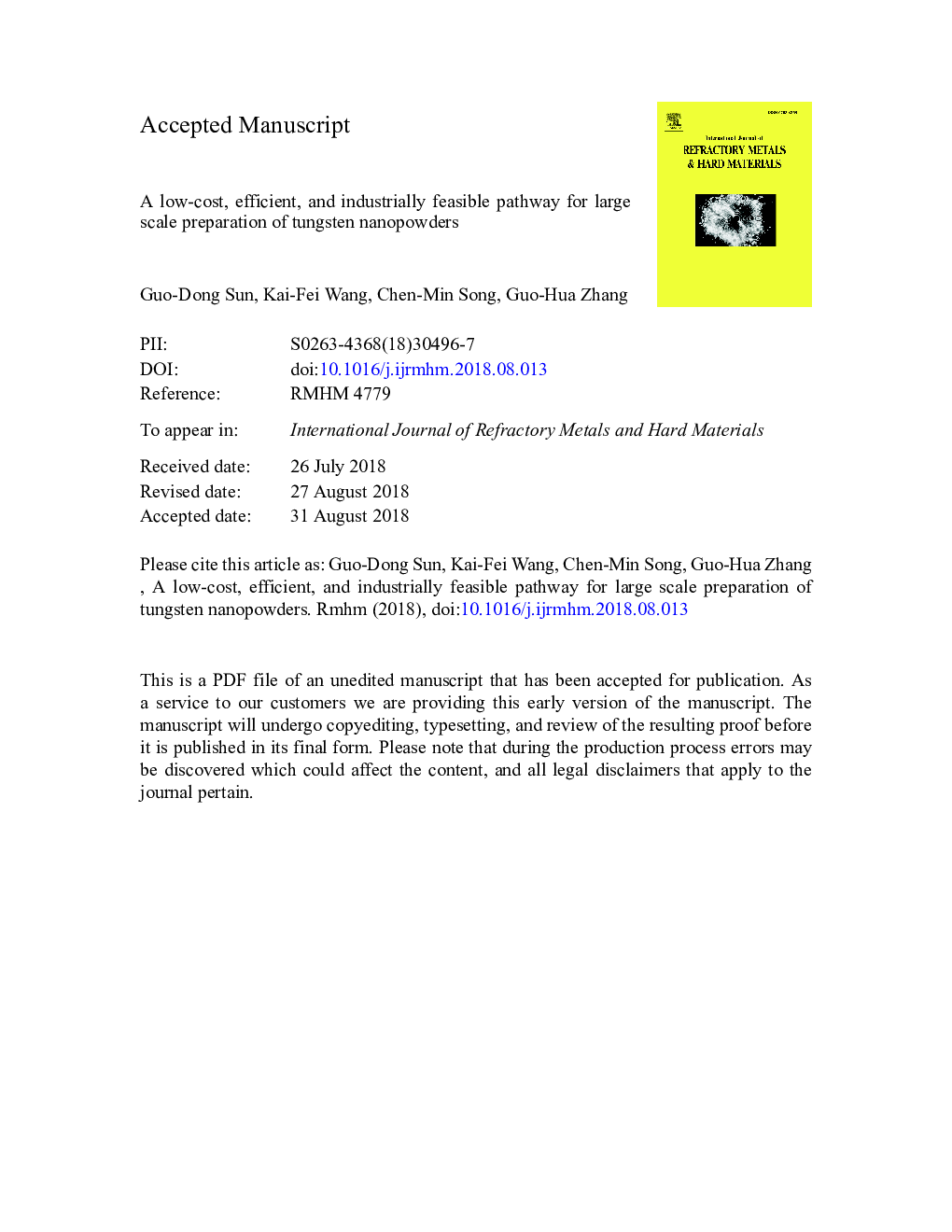| Article ID | Journal | Published Year | Pages | File Type |
|---|---|---|---|---|
| 10142077 | International Journal of Refractory Metals and Hard Materials | 2019 | 31 Pages |
Abstract
Tungsten (W) is the most commonly used high-temperature refractory metal in many critical fields such as aerospace, military and electronic industries etc. This paper proposes a low-cost, efficient, and industrially feasible pathway for large scale preparation of tungsten nanoparticles via the combination of carbothermic reduction and hydrogen reduction processes. The new strategy involves the preparation process of pre-reduction W powder by reducing commercial WO3 with insufficient carbon black at 1050â¯Â°C or 1150â¯Â°C to avoid the residue of carbon, and the deep reduction process of pre-reduction W powder by hydrogen 725â¯Â°C. By this process, most of the oxygen in WO3 was reduced by carbon, and W particles with a much smaller size could be obtained owing to the absence of the volatile tungsten oxide, such as WO2(OH)2, which leads to the serious increase of particle size during the hydrogen reduction process. Tungsten nanoparticles with average particle sizes of about 40â¯nm and 75â¯nm have been successfully synthesized at 1050â¯Â°C and 1150â¯Â°C, respectively, with the residual carbon content as low as about 0.01%. This process can be readily extended to a large-scale industrial production of W nanopowders. Additionally, this new strategy has great potential to prepare other pure metals (or nanopowders) from their metal oxides via combining of carbothermic reduction (main process) and further reduction of other reducing agents.
Related Topics
Physical Sciences and Engineering
Materials Science
Metals and Alloys
Authors
Guo-Dong Sun, Kai-Fei Wang, Cheng-Min Song, Guo-Hua Zhang,
